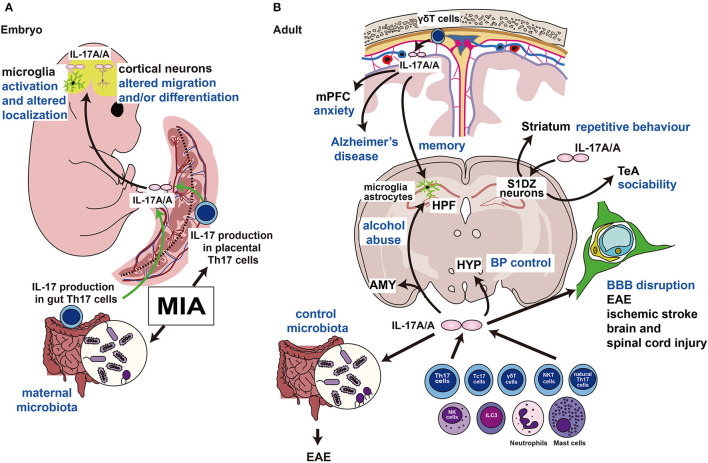Figure 2.
Functions of IL-17A in the embryonic and adult brains. (A) MIA induces the production of IL-17A (IL-17A/A indicates the homodimer) in Th17 cells of the maternal intestine and placenta. IL-17A crosses the blood-placental barrier and affects embryonic brain development. (B) IL-17A is produced by γδT cells in the cranial meninges and regulates the mPFC, which controls emotion, and HPF, which regulates memory formation. This pathway may be activated in the Alzheimer's disease model. Direct injection of IL-17A into the S1DZ restores the ASD phenotypes of repetitive behavior or sociability. IL-17A also controls the gut microbiota, and its disruption causes autoimmunity. IL17A is involved in the destruction of the BBB in several neurological disorders. Intravenous injection of IL-17A affects the hypothalamus and alters systemic blood pressure. IL, interleukin; MIA, maternal immune activation; Th17, T helper 17; mPFC; medial prefrontal cortex; HPF, hippocampal formation; S1DZ, primary somatosensory cortex dysgranular zone; ASD, autism spectrum disorder; BBB, blood-brain barrier; HYP, hypothalamus; BP, blood pressure; EAE, experimental allergic encephalomyelitis; Tc17, IL-17-producing CD8+ T cells; NKT, natural killer T cells; NK; natural killer cells; ILC3, type 3 innate lymphoid cells; AMY, amygdala; TeA, temporal association area.

